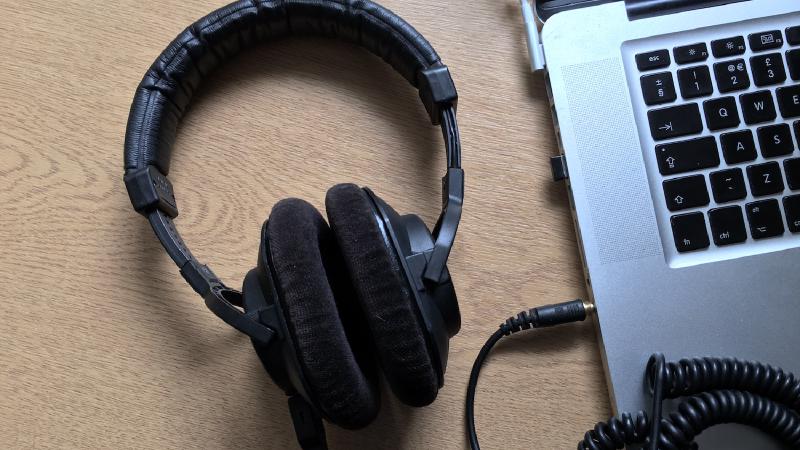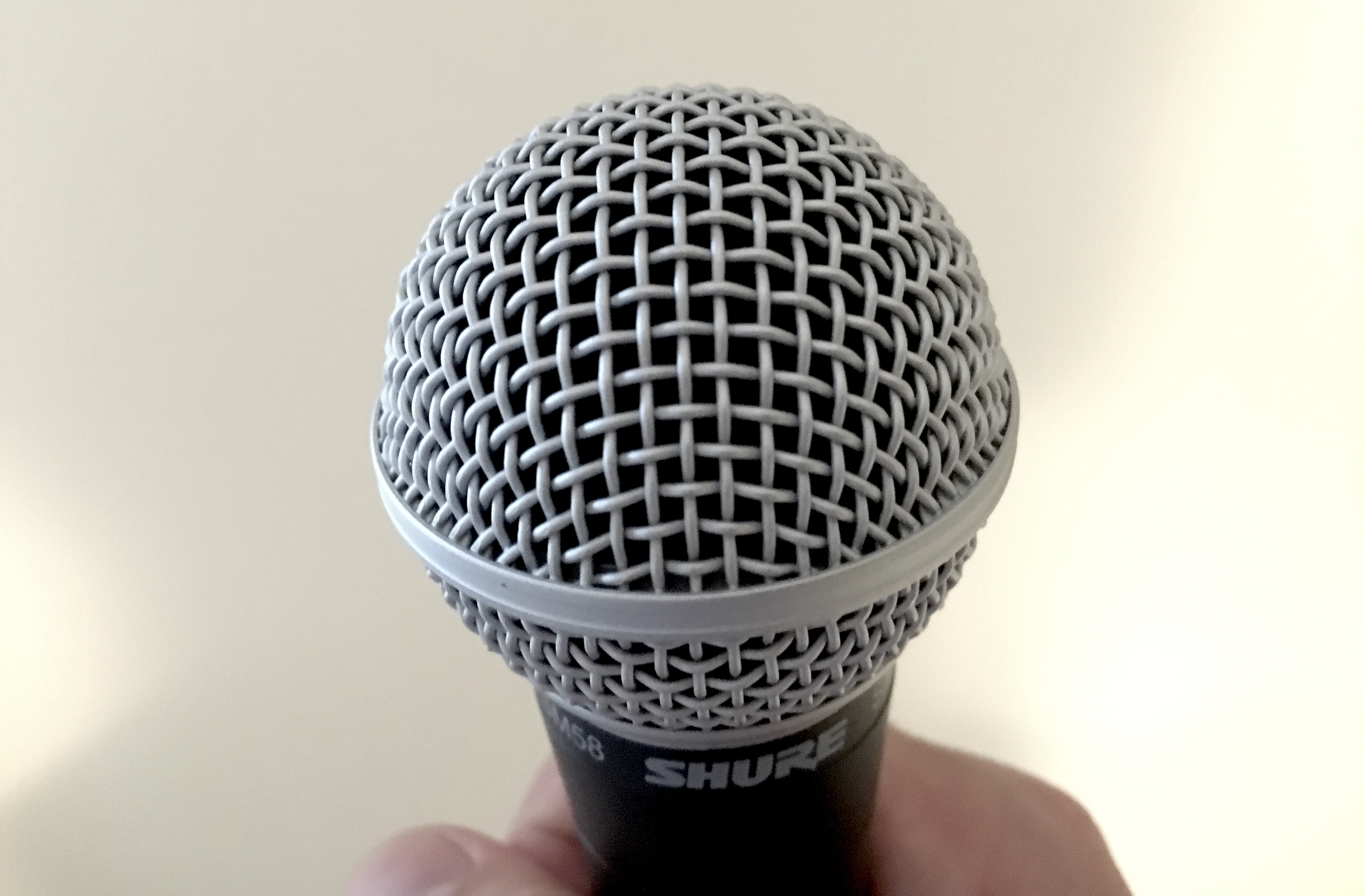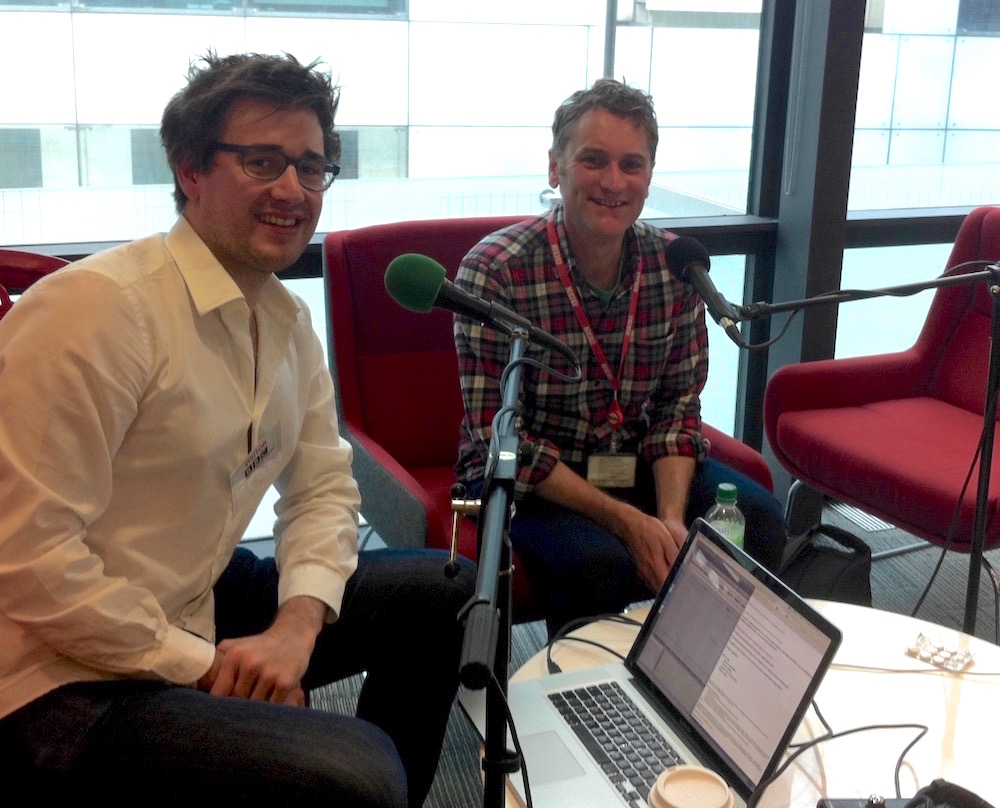Part 2: Recording

The recording space
When arranging the interview make sure you have access to an appropriate recording space. You want a room that doesn’t echo too much - big seminar/board rooms are usually poor choices, small offices with carpets and lots of soft furnishings are better. Break-out areas, atriums, and hallways are usually very bad recording environments due to echoes and the likelihood of someone walking past. You don’t want to be disturbed by colleagues or someone vacuuming halfway through the interview.
Arriving in the room

Say hello with your interviewee, and if possible, spend some time (a few minutes) getting to know each other. This isn’t always possible and you probably won’t have much time, but building a rapport beforehand builds trust and can result in a much better quality interview. This process starts before you meet during initial contact (i.e. emails).
Make sure your phone is off, and ask your guest to if the can do the same (or at least onto airplane mode) to avoid audio interference during the recording. If you’re sitting at a table, try and sit across the corner from your guest. This serves a number of purposes: firstly sitting across the corner normally means your voices aren’t projecting straight on to the walls in the room, minimising direct reflections. Secondly the off-angle is less-aggressive than sitting straight on to guest, helping them to relax. Finally, the corner of the table makes a good elbow rest rest while holding the microphone, stopping your arm from falling off mid-interview.
A quick note on equipment

There are plenty of good guides to podcast equipment. For the CiW interviews I used a Shure SM58 microphone (with a windshield) connected to an old iPhone 4 using an iRigPre, along with some in-ear headphones. I use the app Bossjock Studio to record the sound because it allows you to turn off the inbuilt audio processor on the iPhone 4 resulting in much higher audio quality then you can normally get. I found this setup to be a good compromise between audio quality, portability and cost.
Setting up the recorder
It’s important to set up your recorder so that the audio you record is neither too loud, nor too quiet. Too loud and it will distort (clip) - think of the crackling noise when someone shouts into a microphone, too quiet and when you try and make it louder later you’ll hear lots of noise hissing away in the background.
As this is very much equipment dependent the best approach is to spend time playing with your recording setup well in advance of the actual interview. Practice playing with all the settings, turning all the knobs up and down, to get a feel for what everything does and what sounds good.

Always wear headphones while making the recording. You need to be able to hear the sound from the microphone as it’s being recorded (this is called monitoring). It’s the easiest way to tell if you’re recording quality is sufficient, and identify if something changes mid-way through the recording. Listening to your own voice can be quite disconcerting (especially in real time), so again it’s worth practicing and get used to it, the feeling goes away with time.
Do a quick recording while warming up with your guest. This is not for use in the final edit, but it gives the interviewee a chance to get used to you sticking a big lump of metal and foam right in their face, and allows you to check that the audio is recording properly. Once done, stop the recording and listen back to it carefully to make sure everything’s ok. If it’s not, make changes and try again. This is the most critical moment of the interview – if you don’t capture the sound properly then the rest of the process is pointless.
Starting the interview

Once that’s sorted start a new recording. Before asking any questions I like to be upfront with my guests, and make clear to them again that the recording will be edited and distributed online, and ask them to confirm on the recording that they understand this and are happy to take part. This can be a little jarring, but as a non-professional I want to take care that my guests (who are often colleagues, and who have kindly given their time) are fully aware of what’s going on, and how the audio will be used.
In general, I start off with asking somebody to introduce themselves, and easy questions about their work, and so on. Most people are (including the interviewer) take a few minutes to warm up. Listening back I can often hear nerves in my voice during the first couple of questions, which slowly fade as we both become more comfortable. Save the more quirky or provocative questions until the end.
During the interview
If I mess up a question, or the interviewee fluffs a response, I just start it again, leaving some silence in-between (to make editing easier). This isn’t live, so it’s fine to do things twice if needed.
You might find some guests talk and talk and talk, without giving you a chance to ask other or follow-up questions. In some cases you may have to cut them off in order to keep the interview on track. Literally moving the microphone away from their mouth is a clear indicator you want to move on!
If there’s something you don’t understand – ask your guest to explain it. If something sounds interesting ask more about it. Ask them about feelings and emotions. Trust your nose and don’t be afraid to stray from your plan. The only caveat is to make sure to keep an eye on the time. If you said the interview will only take 15 minutes – make sure it only takes 15 minutes, your guest will appreciate you respecting their time. If something is going well and you’d like more time, you can always say ‘I notice we’re almost out of time, are you happy to carry on talking further?’ – normally the answer is yes.
End of the interview
At the end of the interview check that you’ve got everything you wanted and then ask your guest to introduce themselves again. Notice how much more confidently they do it the second time round, after you’ve both warmed up. You can now cut the first introduction, and use the more confident one instead…
Consider also recording the sound of the quiet room, without talking – this can be useful during editing. Make sure your recording is saved, and have a quick listen back to make sure you definitely recorded everything.
Thank your guest, clear up your equipment quickly, say thank you again, and leave. Once the spell of the interview is over, your interviewee may want to chat more, but it’s more likely they will want to get on with the next part of their day. Be accommodating to their wishes.